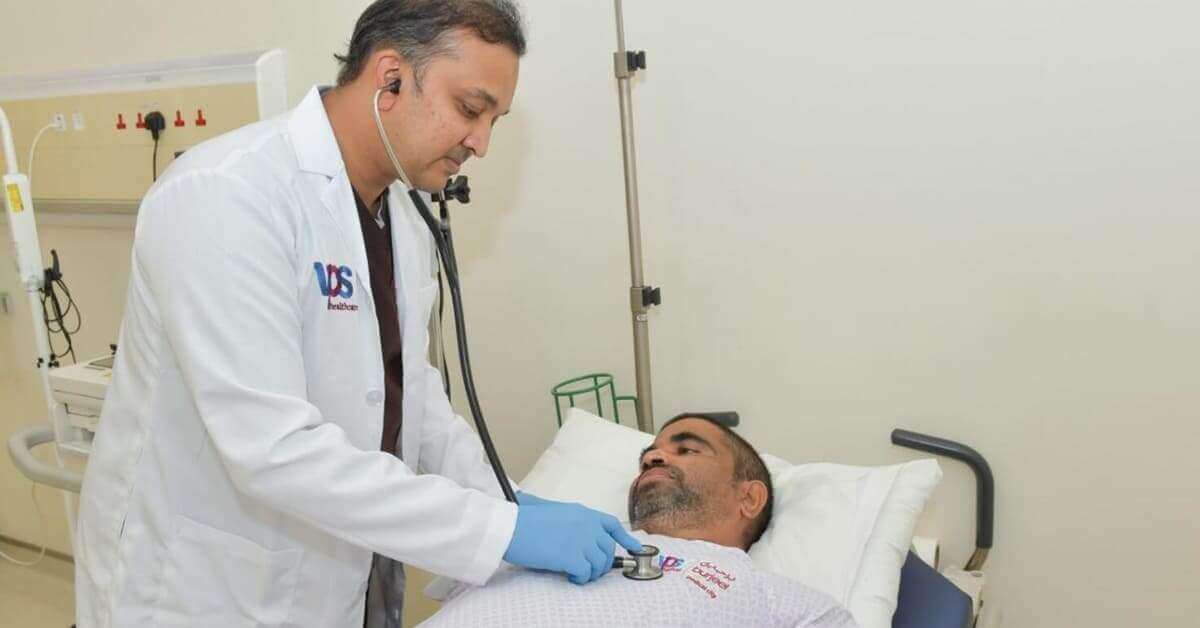Surgeons in Abu Dhabi have removed 40 kidney stones from a 27-year-old patient using a minimally invasive surgical procedure.
Medics at Lifecare Hospital in Mussaffah used laser lithotripsy to treat Balkar Singh, a carpenter from India.
The technology breaks kidney stones into smaller pieces that can be removed by surgeons or flushed out of the body.
Mr Singh, who works for a construction company in Mussaffah, was in agony when he visited doctors, after suffering with symptoms for more than a year.
The doctors diagnosed ureterocele, a blockage in his bladder. They said the congenital condition had caused his ureter to swell and the stones to accumulate.
Mr Singh, from Punjab, said he put up with chronic stomach pain and a burning sensation when urinating, before seeking medical help.
“I started getting pain in the lower portion of my stomach about a year ago,” he said.
“At that time, I was in India and did not consider it seriously.
“I used to get pain intermittently. But it was manageable until a few months later, when my condition worsened. It became excruciatingly painful.”
Doctors in India prescribed medicine and advised Mr Singh to consider surgery. But he was about to move to Abu Dhabi, so postponed the procedure owing to the recovery time required.
Medicine including painkillers allowed him to continue working for a few months, before the pain became too much to endure and his colleagues advised him to have a hospital check-up.
A urologist at Lifecare Hospital referred Mr Singh for an X-ray and ultrasound, and discovered 40 kidney stones blocking his ureter, each measuring from 8 to 25 millimetres in size.
“I was shocked when the doctor told me how many there were. I could not believe it,” Mr Singh said.
Ureteroceles are ballooning inside the ureters, tubes that connect the kidneys to the bladder.
The condition is most likely to cause problems in children and younger adults.
Commonly caused by a urinary tract infection, it can lead to symptoms such as fevers, a burning sensation and a loss of bladder control.
In adults, a ureterocele can cause urine to flow backwards from the bladder to the kidneyand become more serious. It occurs in less than one in 500 people and is usually caused by a genetic anomaly.
Doctors would usually perform minorsurgery to remove kidney stones, but owing to their number and size in Mr Singh’s case, this risked permanent damage to his bladder.
Instead, specialist urologist Dr Althaf Hussain took a more unusual approach.
Using laser, the stones were broken down into fragments small enough to pass through the patient’s ureter. They could then be expelled naturally from his body.
“In this case, the patient had a rare condition of a swollen ureter blocked by multiple stones – it is an unusual occurrence,” Dr Hussain said.
“Ideally, we would have preferred an open surgery to remove the stones. But that would have involved multiple risks of incurring injuries to the bladder and vessels. His recovery would also have taken much longer.”
Mr Singh was discharged from hospital only 24 hours after the procedure and has recovered well.
“Being a doctor, it is our responsibility to offer the best care to our patients,” Dr Hussain said.
“That means quicker recovery and maximum comfort.
“I had explained the procedure in detail to Mr Singh, and he also chose to undergo the laser therapy.”
Abu Dhabi doctors use laser technology to remove 40 kidney stones in two-hour operation.


